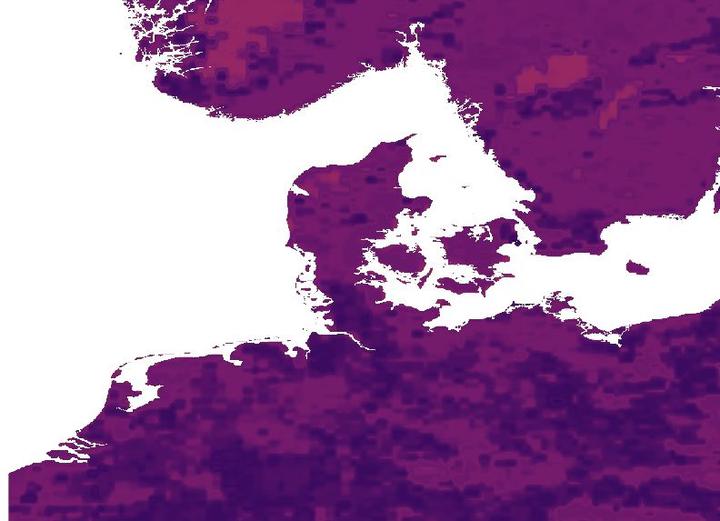Gridding station-based wind observations
A new member of the E-OBS dataset
 Strong average wind speed over North Europe during a storm
Strong average wind speed over North Europe during a stormThe European Climate Assessment & Dataset (ECA&D) collects high-quality observational datasets provided by 60+ participant countries. One of the products this organization provides is the E-OBS daily gridded observational dataset, which facilitates the access of the general public to long-term (1950-present) weather gridded layers. The latest release of E-OBS (v20.0) provides data in regular grids for temperature, precipitation, mean sea level pressure and global radiation (newest!), which enable the assessment and analysis of observed changes in climate extremes in Europe. Next up in the list of weather variables to be provided by E-OBS is gridded wind speed. Wind is a local phenomenon which is spatially inhomogeneous, which means that can be very variable with distance.
Data analysis
Currently, we are investigating how to model wind speed using Generalized Additive Models (GAM). The main feature of these models is that they create smooth interpolated surfaces showing gradual transitions in the geographic space, fitting splines or tensor interactions to each of the covariates (e.g. altitude, slope) involved in the analysis. We used quality-controlled wind observations collected by the E-OBS network over the period 2014-2016, to assess how feasible is the modelling of wind with GAMs. The model selection process helped us to assess what are the models (e.g. splines, tensor interactions) performing better, not only in terms of error metrics, but also creating realistic wind maps of Europe.
Preliminary results
Once we finish the assessment of the approach, we can create daily gridded wind maps for the period (1980-2019) that can be incorporated to Copernicus Climate Data Store. This work might contribute at developing ECVs from the daily gridded series, serve the next generation of regional climate models, or opening new research lines for users willing to incorporate gridded wind data in their analyses.
Additional information
- Funding: EU/Copernicus
- Duration: Jan 2020 - Apr 2020
References
Cornes, RC, van der Schrier, G, van den Besselaar, EJM, & Jones, PD (2018). An ensemble version of the E‐OBS temperature and precipitation data sets. Journal of Geophysical Research: Atmospheres, 123, 9391– 9409. https://doi.org/10.1029/2017JD028200
van den Besselaar, EJM, Haylock, MR, van der Schrier, G, and Klein Tank, AMG (2011), A European daily high‐resolution observational gridded data set of sea level pressure, J. Geophys. Res., 116, D11110, https://doi.org/10.1029/2010JD015468
Haylock, MR, Hofstra, N, Klein Tank, AMG, Klok, EJ, Jones, PD, and New, M (2008), A European daily high‐resolution gridded data set of surface temperature and precipitation for 1950–2006, J. Geophys. Res., 113, D20119, https://doi.org/10.1029/2008JD010201
EU-FP7 project. Climate monitoring products for Europe based on Surface in-situ Observations (2017) [(link)] (https://climate.copernicus.eu/climate-monitoring-products-europe-based-surface-situ-observations)